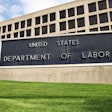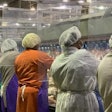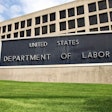Tyson Foods’ Health and Safety Department has launched a pilot project designed to improve workplace safety communication, awareness and practices as well as provide more detailed data about safety. The findings of the pilot project, being conducted at nine plants, are expected to provide the groundwork for a company-wide improved safety initiative.
The initiative is being led by Greg Spencer, who was recently appointed to the new position of senior vice president of Health and Safety. Tyson Foods’ health and safety management was previously combined with management of the company’s environmental responsibilities. The company has separated these functions to allow more focus on each area.
“We’re committed to providing a safe work environment, as well as training and skills for our team members to be safe at work,” said Mike Roetzel, group vice president of operation services. “Greg has the expertise and passion to deliver on that commitment.”
Spencer has been with Tyson Foods for 31 years. He has served in a variety of roles, including plant and live operations, and has led a number of poultry and prepared foods business units including his most recent role leading the retail value-added poultry group.
“We care about every person who works with us – that’s why we call each other team members,” Spencer said. “Along with enhancing goals to reduce and eliminate work-related injuries and illnesses, we’ll be continuing efforts to improve workplace health through ergonomics, the science of making the workplace fit the worker. Sometimes we can prevent a repetitive injury by modifying a workspace or providing different tools.”
Tyson Foods’ involvement in ergonomics goes back to the late 1980s, when a program was developed in the company’s beef and pork business.
The company employs 500 health and safety professionals in occupational safety, industrial hygiene, health care, ergonomics, process safety, loss prevention and transportation safety, as well as other specialists who serve in key health and safety roles at corporate and plant levels.
Tyson Foods has extensive safety and health training, programs and policies in place at all of its facilities. Each team member receives detailed safety training and orientation at the beginning of their career. They also receive ongoing training, available in multiple languages, designed to keep them informed of important safety requirements, enhancements and best practices. Many facilities have safety and ergonomic committees, which include the participation of hourly production team members.
Full-time safety managers and occupational health nurses are employed at the majority of Tyson Foods’ facilities. Managers hold regular “line meetings” to address safety related topics with team members, and regular workplace safety and health audits are conducted by facility management teams.
“We’ve always listened to what team members tell us about their experiences, but we’re learning how to give everyone at Tyson Foods a louder voice by encouraging a culture of communication about health and safety,” Spencer said.

















